Pinzani began to cultivate the passion of cycling a few years before the Great War, but it was only later that he was born the desire to learn the art of bicycle making and, to cultivate this passion, he became an apprentice in a mechanic’s workshop. After a couple of years of apprenticeship and having raised some money, he opened his workshop in Gioberti Street No.85 in 1923.
 The Pinzani Bike
The Pinzani Bike
He began to make a name for himself during the twenty years of fascism and during his life produced both work bikes and racing bikes with his brand “PINZANI” (with the Elongated P taking its cue from the most famous Pirelli brand). The Pinzani differ from all the other bikes for their classic celestial livery embellished with black flames bordered with red along the central tubes of the frame. Giusto has always remained tied to these colors that were his precise choice and also his boast. When he went to the cycling races where his creations took part, he always said that, among the multitude of colors of the bikes, his blue ones stood out and were easily distinguishable from the others. Later he began to paint black walking bikes and bikes for his young silver-colored runners, but always using his beloved celestial for racing bikes.
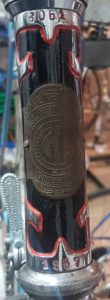
It was only with the passage of the workshop to his helper Osvaldo Betti that bikes of other colors such as green or orange began to be produced. Pinzani, to make his frames, bought the tubes of various brands, the most used was the A.L Colombo, later columbus, famous for selling its steel pipes to the most famous bike brands such as Bianchi and Atala.
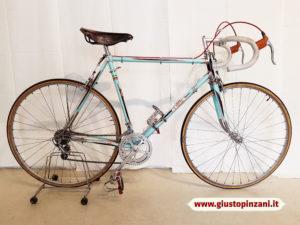
Once made, the frame was brought by the shop to paint and then reassembled with top-of-the-range accessories of the time. At first it was Cioni, a close friend of Pinzani,who had a workshop in Via Borgo San Jacopo to think of painting, chrome and hand-drawing the iconic black flames bordered with red. They were so iconic that they were made on all bikes: racing, walking, women’s. Due to the unpleasant smell of the paint, Cioni had to move to Ponte a Ema in 1958 and from that moment Pinzani began collaborating with a shop nearby Oberdan Square to be painted with its unmistakable livery. Pinzani’s peculiarity was to mark each bicycle, on the front just below the handlebars, with a serial number.
Sports cycling and Oltrarno
Pinzani has always had a soft spot for cycling. Already in the late 1920s, the Florentine cyclist Umberto Berni participated in the Tour de France as an “isolated”, that is, without a team, with a bicycle built by Giusto. This passion embraced the whole family from the 1930s until the 1960s, so much so that Pinzani sponsored the amateur sports and cycling club of the Oltrarno, of which he was also president throughout the 1960s until 1972. Even after retiring and leaving the presidency, he remained tied to the green white.
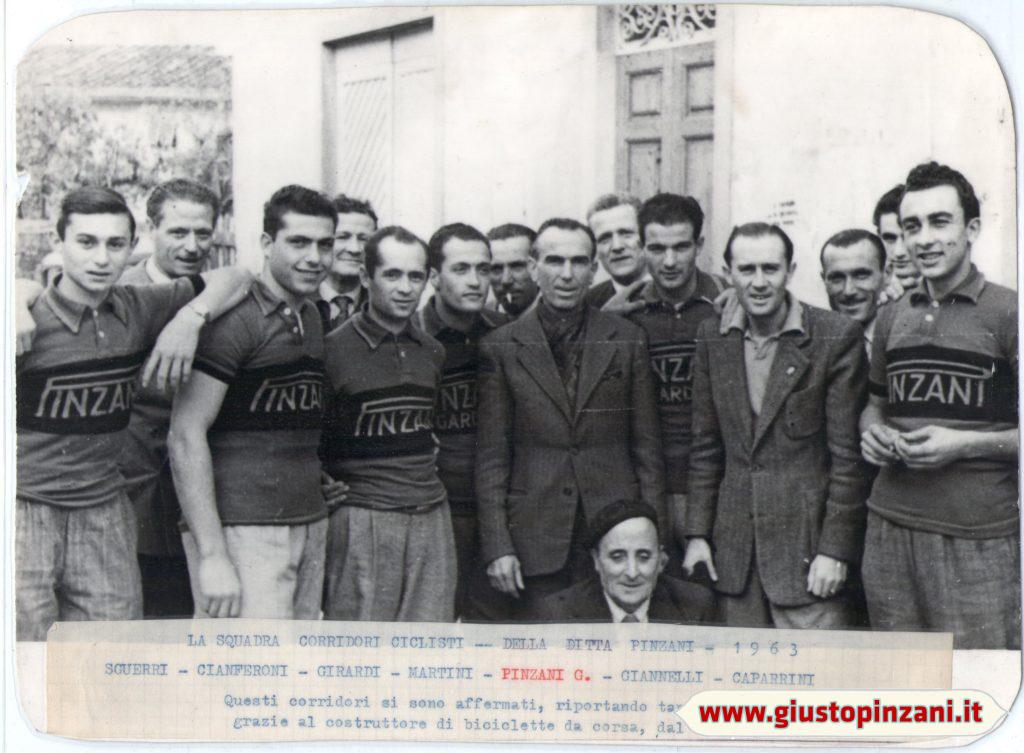
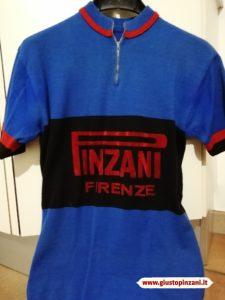
He provided young cyclists with all the equipment to run: the bicycles they rode with, tubular (precious at the time due to rough roads) and the blue Pinzani jerseys with black central bar and written Pinzani of red that recommended that his cyclists wear during the training days so as not to spoil the jerseys of the Oltrarno. He discovered and trained, during their amateur years, many Florentine boys to whom he loved almost as if they were his own children and worked to provide them mechanical assistance during their races. At home Pinzani never lacked boys from the team invited to dinner and on these occasions his wife Italia went to the butcher to buy meat to do at the irons, very expensive food at the time but very suitable for the diet of the runners. Among the boys pulled up by Giusto we point out the great Gino Bartali and Gastone Nencini, the lion of Mugello who soon became among the most famous Tuscan and Italian cyclists. Bartali and Nencini won both the Giro d’Italia and the Tour de France, a result that only a few other riders have won, and so they are rightly considered two of the greatest champions of all time.
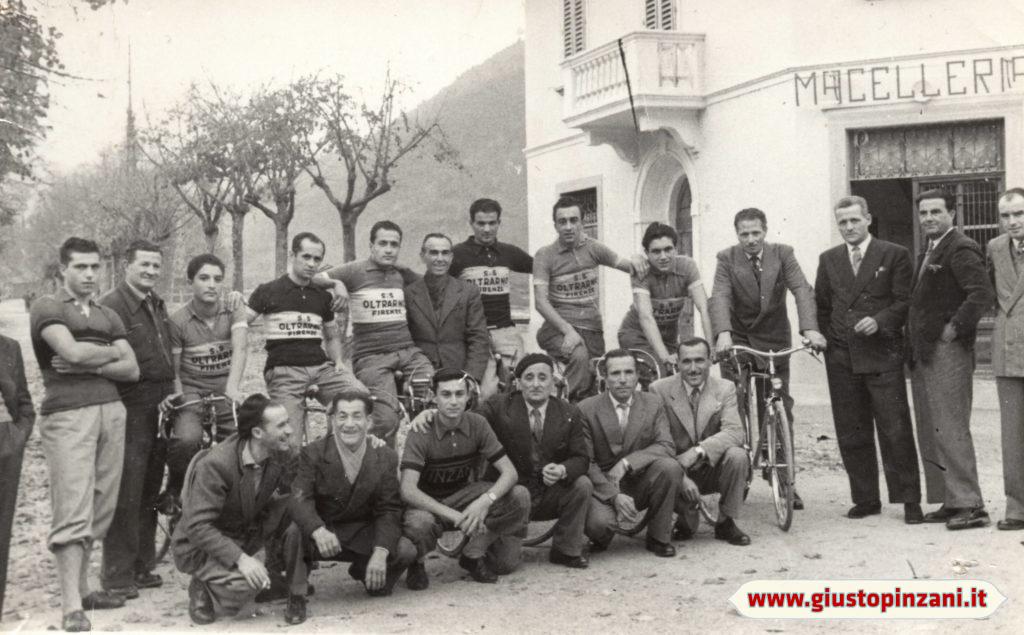
But in addition to them also Bruno Giannelli, Giuseppe Martini, Cino Cinelli, Valdemaro Bartolozzi and many others were lucky enough to grow and ride under the watchful and loving wing of Giusto Pinzani who, even for them, made custom bikes, aware that a good posture and size suitable to each cyclist led to better results.
Gino Bartali
An example of the dedication and affection he had for his boys can be found in the early stages of the career of the great Gino Bartali. Gino came from a humble family, his parents were laundresses of Grassina. In those days there were no modern washing machines. The laundresses walked around the city in a cart screaming to announce to the citizen their passage. The citizens handed them a bag full of clothes to wash with a sheet sewn over where the name and clothing contained in the bag was written. Giusto had already realized that the boy had special legs and went to talk to parents of him at Ponte in Ema, where they lived. Having understood that the family did not have the financial means to raise a cyclist he offered to keep the young man, so that he could run. In the following years Gino Bartali always thanked him, acknowledging that he had become a champion also because of Pinzani’s skill and generosity. When he turned professional at Legnano he asked that his bicycle be made the size of the one he used in Florence. For this reason, some emissaries of the Legnano went to Florence, via Gioberto 85 to ask the master craftsman Pinzani the measures to make Gino’s bicycle.
Gastone Nencini
Another example of how Pinzani has always maintained an almost paternal attitude with his former runners, once passed professionals, was the help he gave throughout his career to Gastone Nencini.
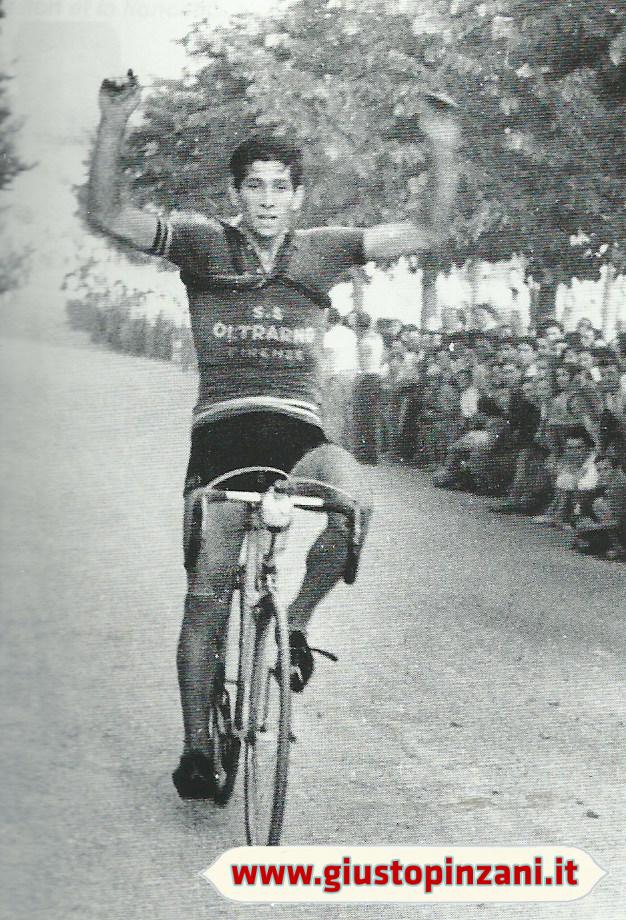
Gastone Nencini ran and won a lot with the Oltrarno team and, thanks to these victories, turned professional in 1953. The following year he was signed for Leo-Chlorodont, an Italian team sponsored by german toothpaste brand Leo-Werke. At the start of their first Giro d’Italia in 1955, the owner of the Italian factory where the toothpaste was produced criticized the bike that Nencini and his companions used: a white bicycle with no recognizable coat of arms. It was thus that the team mechanic, the young Ernesto Colnago of Cambiago, had the idea of pasting the coat of arms of the German company “Leo” on the oblique barrel. This led to the Leo brand that accompanied Nencini and his team for the next four years. Gastone, however, could not fully appreciate the frame of Leo’s bicycles, and it was so that one day he called his mentor asking him for a training bike with his measurements. He also asked if he could make it for the morning of the next day. Despite the difficulty of the undertaking Just did not break down, he hung up the phone and together with his assistant Osvaldo worked all night. At 9 a.m., Gastone passed by the shop and found his new bike ready.
In 1957, for the victory of the Giro d’Italia by Gastone Nencini, the whole street was decorated in celebration to pay homage to the champion and also the one who had discovered and raised him. During the festivities Nencini repeatedly thanked Pinzani who, during the nights between stops, rearranged Gastone’s bicycle. Among the various celebrations was organized in the Bar of Oblivion, a bar on the corner of Via Gioberti and via Cimabue, a small refreshment where all the citizens could cheer on his hero.
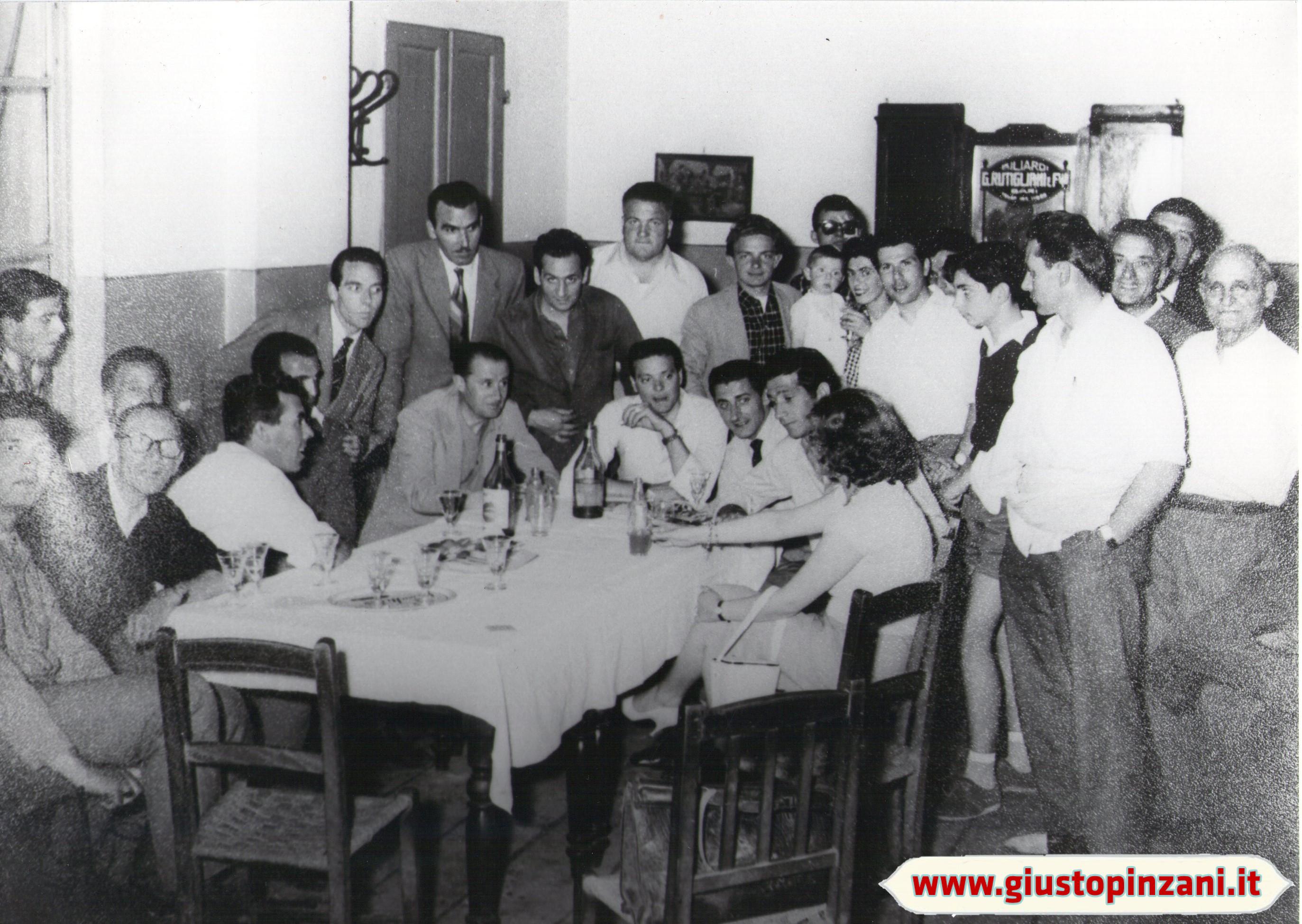
Precisely because of this affair and the great skill of Giusto Pinzani, RAI dedicated a service to the master craftsman. One day some delegates from Rome rang his doorbell, the family opened curiously and discovered that they wanted to interview Giusto Pinzani because in the world of cycling he was now considered the best bicycle craftsman in Italy. With a closed and somewhat gruff character, like all the best Florentine artisans, Giusto, at first, did not want to know at all that he was disturbed during his work. Eventually an agreement was found: the filming was done in the workshop, while he was working on one of his bicycles, armed with a welder, black gabbanella and welder goggles. To shoot the video, Gioberti was closed to traffic, from the top to Via Cimabue, generating enormous curiosity among the inhabitants of the street.
Just Pinzani felt very proud to have sponsored the cycling company Oltrarno and to have discovered and raised “his boys”. He was loved and respected by all, both in Florence, and in Pontassieve and County. His popularity and fame made him proud enormously, certainly not because of his superiority, but because he understood that his work, to which he had always dedicated himself with love and passion, but also with many sacrifices, was rightly recognized and appreciated by all.
